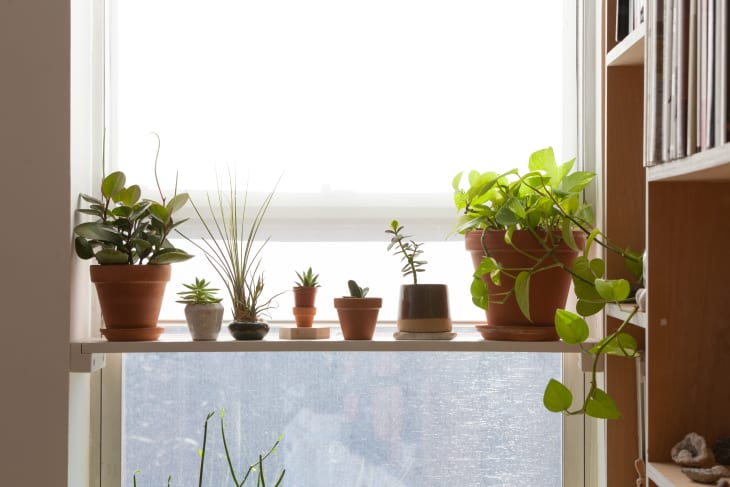“Proplifting”—picking up fallen succulent leaves off the floors at big box stores and taking them home to propagate—is the hot new thing in the plant world, to the point that there’s a subreddit devoted to it.
If you’d like to give it a try, here are a bunch of inspiring posts to get you started. But even if you never plan on proplifting, you’ll agree that the tiny “pups” that grow on salvaged leaves are the cutest, juiciest things in the whole wide world.
These are too, too cute. And note that they were “rescued” from Lowe’s a short time ago and already have a healthy litter of pups. It’s incredible how quickly the propagation process can start.
Want to try it yourself? We’ve got the advice you need in Foolproof Ways to Keep Your Succulents Alive and Thriving:
Easy propagation is one of the most rewarding parts of owning succulent plants. Some types of succulents have “pups,” which are little baby plants that grow from short stems near the base of the plant. These can be cut or twisted off and replanted. They’ll do best if you leave them out for a day before planting so they heal over.
Many succulents can be propagated from leaf cuttings or entire leaves. Just break the leaf off the plant, let the cut heal over for a few days, and plant them in soil. Cuttings from succulents that have grown leggy are also excellent candidates for propagation.
Many of the proplifters on Reddit maintain that you should place the leaves on top of the soil, which allows the roots to find their way down and prevents the leaves from rotting.
Proplifting sounds a bit like stealing (and many proplifters seem to get a thrill from the forbidden nature of it), but is it really? I spoke to a very nice employee at my local Home Depot who thought there was no official “Home Depot Proplifting Policy,” and didn’t think there would be a problem with it, but he advised checking with the garden center employees at your local store. Plus, they might have a secret stash of special finds, as well as some tips and tricks to share.
I’ve worked in the floral department of Whole Foods and in a boutique florist, and in both situations, there were often scraps we were getting rid of, even after all employees had already taken as many home as we wanted. I would have been so jazzed to share scraps with customers and, if needed, teach them how to care for them.
There’s an ecological benefit too: Those jobs were both in San Francisco, which had a fairly robust composting program, but in other cities and towns, I would guess that many businesses and employees would be happy to see plant scraps given a happy home rather than end up in a landfill. And on the business end, getting someone excited about succulents is a good way to make a loyal customer!
But remember: All of this only applies to pieces of succulents that have already fallen or been broken off and would otherwise be swept up and thrown away. Breaking off a leaf is not cool, as Reddit user u/bclagge reminds us in their very thorough Propogating 101 guide:
Each leaf represents stored water and energy and the plant would rather use that for itself than anything else. The leaves have to be physically removed from the mother plant. You SHOULD NOT remove leaves from a healthy plant at a nursery as that would morally constitute theft.
There’s also a step-by-step proplifting guide with photos that’s quite helpful.
If you’re inspired to start proplifting—it’s hard not to be inspired by this image of what one little succulent leaf became after a year—most of the proplifting posts are full of enthusiastic, insightful comments that will help your pups thrive!
Hải Yến
Gió bạn với cây tự buổi nào ,
Gió về cây lại ngất ngư chao .
Gió đi cây sẽ im lìm đứng,
Như kẻ lỡ làng dạ khát khao .
Hải Yến
Gió bạn với cây tự buổi nào , Gió về cây lại ngất ngư chao . Gió đi cây sẽ im lìm đứng, Như kẻ lỡ làng dạ khát khao .



